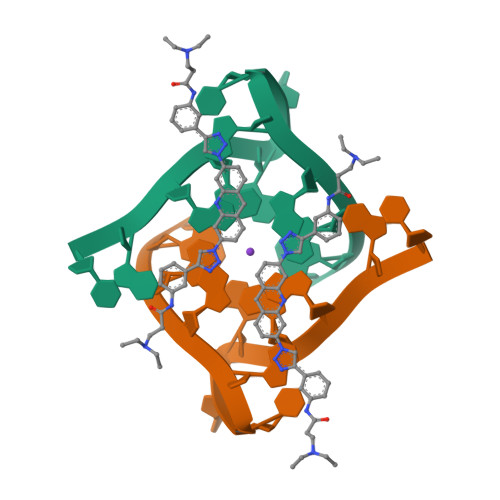Structural basis of telomeric RNA quadruplex-acridine ligand recognition.
Collie, G.W., Sparapani, S., Parkinson, G.N., Neidle, S.(2011) J Am Chem Soc 133: 2721-2728
- PubMed: 21291211
- DOI: https://doi.org/10.1021/ja109767y
- Primary Citation of Related Structures:
3MIJ, 3QCR - PubMed Abstract:
Human telomeric DNA is now known to be transcribed into noncoding RNA sequences, termed TERRA. These sequences, which are believed to play roles in the regulation of telomere function, can form higher-order quadruplex structures and may themselves be the target of therapeutic intervention. The crystal structure of a TERRA quadruplex-acridine small-molecule complex at a resolution of 2.60 Å, is reported here and contrasts remarkably with the structure of the analogous DNA quadruplex complex. The bimolecular RNA complex has a parallel-stranded topology with propeller-like UUA loops. These loops are held in particular conformations by multiple hydrogen bonds involving the O2' hydroxyl groups of the ribonucleotide sugars and play an active role in binding the acridine molecules to the RNA quadruplex. By contrast, the analogous DNA quadruplex complex has simpler 1:1 acridine binding, with no loop involvement. There are significant loop conformational changes in the RNA quadruplex compared to the native TERRA quadruplex (Collie, G. W.; Haider, S. M.; Neidle, S.; Parkinson, G. N. Nucleic Acids Res. 2010, 38, 5569 - 5580), which have implications for the future design of small molecules targeting TERRA quadruplexes, and RNA quadruplexes more generally.
Organizational Affiliation:
CRUK Biomolecular Structure Group, The School of Pharmacy, University of London, London, United Kingdom.


















